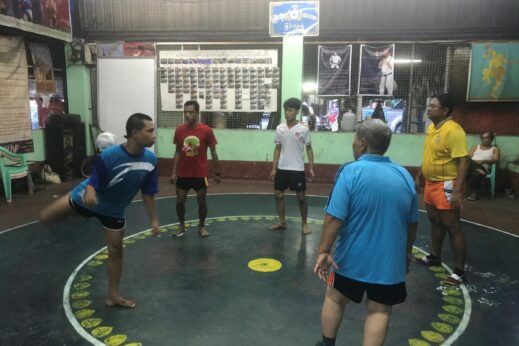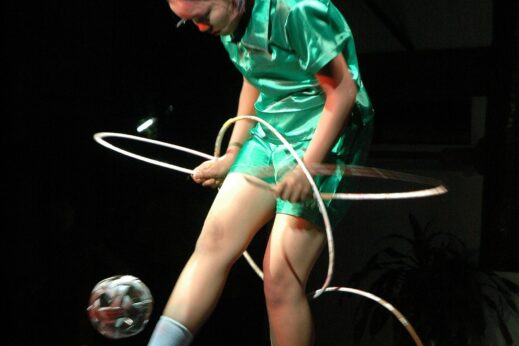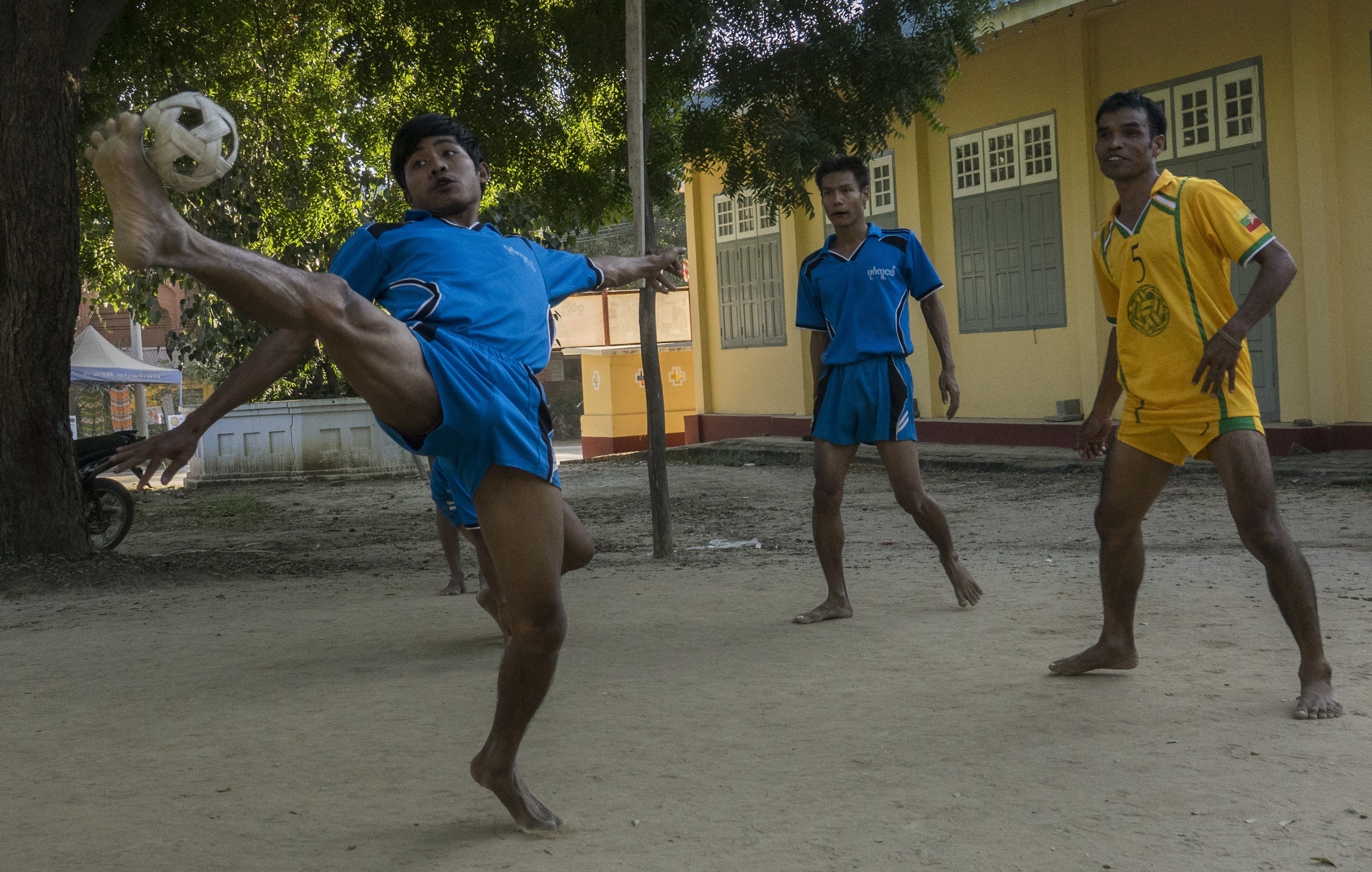At first glance, chinlone might jog memories of sleepy afternoons playing keepie uppie after school. But Burma’s favourite sport not only requires immense agility and a touch of creativity, it also demands presence of mind. Quite fitting for a Buddhist country.
If you’re turned off by the idea of an aggressively competitive and divisive game, chinlone could be the sport you’ve been waiting to get behind.
1. Chinlone isn’t a new phenomenon
Dating back more than 1500 years, chinlone is pretty well established…
It’s one of the country’s two favourite sports (the other being lethwei). As a symbol of Burmese heritage and tradition, untouched by colonial influence, it took on particular significance following the departure of the British in 1948.
2. Technique
Played in groups of six people, the premise is simple enough, keep the ball up using anything but your hands! The aim though is to keep it aloft creatively – like a dance, emphasis is on technique and performance. Players also reference the need for a “zen-like” focus, referred to as jhana.
With 200 different ways of touching the ball (including “blind” moves with the ball behind your back), there’s plenty of opportunity for self-expression. If you’re a whizz, you can take centre stage of the circle for a solo as your comrades walk around you, ready to take over when the time comes. If the ball touches the floor, the game starts again.

3. The winner (and loser) takes it all
Unlike most sports, chinlone is entirely non-competitive. There isn’t an opposing team, and no such thing as losing. The emphasis here is on style and power, so teams are ranked by their technique, quick reactions and athleticism.
4. It’s played with a rattan ball
Chinlone literally translates as “cane-ball”. Unlike a football, rugby ball or even volley ball, the ball used in chinlone is small and light – woven from rattan. When touched it makes a satisfying sound, similar to a basket.
5. What to wear?
Professionally, teams wear a matching kit of t-shirt and shorts, but there’s no hard and fast rule for what players should wear – many men hitch up their longyi and Burmese monks wear their maroon robes. The ball is very light, so playing barefoot or in special chinlone shoes allows players to sense and feel where the ball is.
6. Anyone can play
An inclusive sport, any generation or gender can play chinlone – it’s not unusual to see people in their 80s and children in the same team!

7. There are chinlone festivals
Chinlone festivals are held across Burma (Myanmar) in circular rings surrounded by cross-legged crowds. Witty commentary and live bands accompany the teams, influencing the style and speed of their movements.
Teams travel from all over the world to “compete” in the Waso Chinlone Festival held at Mahamuni Pagoda in Mandalay every year.
8. You can play it anywhere
It’s traditionally played on beaten earth, but in 2013 it was included in the SEA Games (Southeast Asian Games) for the first time, and teams took to a court.

Catch a game of chinlone (or give it a go yourself – did we mention that it’s quite a welcoming sport?!) on a small group tour or fully tailored journey to Burma (Myanmar). For more information, drop us a line at [email protected] or call: 0117 370 9759.



